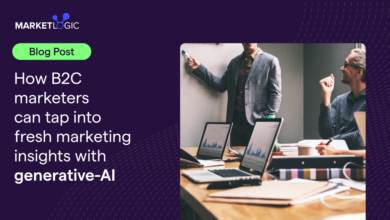AWS sees $100 billion annual run rate as generative AI already provides “a multi-billion dollar” contribution

The generative AI impact seen at Microsoft and Google Cloud have been topped off with the same benefits on show at Amazon Web Services (AWS) which is looking towards a $100 billion run rate this year, with AI cited as delivering “a multi-billion dollar revenue run rate already”.
AWS cloud revenue was up 17% year-on-year for the first three months of the year, hitting $25.04 billion, while operating profit of $9.42 billion now accounts for around 61% of Amazon’s total operating profit.
So it was an ebullient CEO Andy Jassy who declared:
We remain very bullish on AWS. We’re at $100 billion-plus annualized revenue run rate, yet 85% or more of the global IT spend remains on-premises. And this is before you even calculate gen AI, most of which will be created over the next 10 to 20 years from scratch and on the cloud. There is a very large opportunity in front of us.
Jassy picked out a number of underlying growth drivers:
Companies have largely completed the lion’s share of their cost optimization and turned their attention to newer initiatives. Before the pandemic, companies were marching to modernize their infrastructure, moving from on-premises infrastructure to the cloud to save money, innovated at a more rapid rate, and to drive more developer productivity. The pandemic and uncertain economy that followed distracted from that momentum, but it’s picking up again. Companies are pursuing this relatively low-hanging fruit in modernizing their infrastructure. And with the broadest functionality by a fair bit, deepest partner ecosystem and strong security and operational performance, AWS continues to be their strong partner of choice.
AI everywhere
But it was customer interest in generative AI that got the lion’s share of CEO attention:
We’re seeing very significant momentum in people trying to figure out how to run their generative AI on top of AWS.
Jassy reiterated the three layers of the gen AI stack that makes up Amazon’s approach:
At the bottom layer, which is for developers and companies building models themselves, we see excitement about our offerings. We have the broadest selection of NVIDIA compute instances around, but demand for our custom silicon, training, and inference is quite high, given its favorable price performance benefits relative to available alternatives. Larger quantities of our latest generation, Trainium 2 is coming in the second half of 2024 and early 2025.
SageMaker, the firm’s managed service for developers, was picked out for particular mention, with Jassy boasting it is:
a game changer for developers in preparing their data for AI, managing experiments, training models faster, lowering inference latency, and improving developer productivity. Perplexity AI trains models 40% faster than SageMaker, Workday reduces inference latency by 80% with SageMaker, and NatWest reduces its time to value for AI from 12 to 18 months to under seven months using SageMaker. This change is how challenging it is to build your own models, and we see an increasing number of model builders standardizing on SageMaker.
He went on:
The middle layer of the stack is for developers and companies who prefer not to build models from scratch, but rather seek to leverage an existing Large Language Model, or LLM, customize it with their own data, and have the easiest and best features available to deploy secure high-quality, low-latency, cost-effective production gen AI apps.
This is why we built Amazon Bedrock, which not only has the broadest selection of LLMs available to customers but also unusually compelling model evaluation, retrieval augmented generation, or RAG, to expand model’s knowledge base, guardrails to safeguard what questions applications will answer, agents to complete multistep tasks, and fine-tuning to keep teaching and refining models.
Bedrock already has tens of thousands of customers, including Adidas, New York Stock Exchange, Pfizer, Ryanair, and Toyota. In the last few months, Bedrock’s added Anthropic’s Claude 3 models, the best-performing models in the planet right now; Meta’s Llama 3 models; Mistral’s Various models, Cohere’s newest models, and new first-party Amazon Titan models
Finally, the top of the stack comes in the shape of gen AI applications, with Jassy pointing to the general availability yesterday of Amazon Q, pitched as “the most capable generative AI-powered assistant for software development and leveraging company’s internal data”. He said:
On the software development side, Q doesn’t just generate code, it also tests code, debugs coding conflicts, and transforms code from one form to another. Today, developers can save months using Q to move from older versions of Java to newer, more secure and capable ones.
In the near future, Q will help developers transform their dotNET code as well, helping them move from Windows to Linux. Q also has a unique capability called Agents, which can autonomously perform a range of tasks, everything from implementing features, documenting, and refactoring code to performing software upgrades.
Q is also able to search all the data in enterprise repositories/sources, summarize it, analyze trends and “engage in dialog with customers”, he added, noting also a new capability called Q Apps:
[This] lets employees describe a natural language what apps they want to build on top of this internal data and Q Apps will quickly generate that app. This is going to make it so much easier for internal teams to build useful apps from their own data…Customers are gravitating to Q, and we already see companies like Brightcove, Bridge Telecom, Datadog, GitLab, GoDaddy, National Australia Bank, NCS, Netsmart, Slam, Smartsheet, Sun Life, Tata Consultancy Services, Toyota, and Wiz using Q, and we’ve only been in beta until today.
And the cost…
But, as with Google, Microsoft and Meta in recent weeks, Jassy pointed out to investors that all of this comes with a higher price tag for AWS. In 2023, CapEx was $48.4 billion. That number’s going up:
We expect the combination of AWS’ reaccelerating growth and high demand for gen AI to meaningfully increase year-over-year capital expenditures in 2024, which given the way the AWS business model works is a positive sign of the future growth. The more demand AWS has, the more we have to procure new data centers, power and hardware. And as a reminder, we spend most of the capital upfront. But as you’ve seen over the last several years, we make that up in operating margin and free cash flow down the road as demand steadies out. And we don’t spend the capital without very clear signals that we can monetize it this way.
My take
The combination of companies renewing their infrastructure modernization efforts and the appeal of AWS’s AI capabilities is re-accelerating AWS’s growth rate.
Nicely done by Amazon in Q1.
On the subject of larger levels of expenditure to support growth, CapEx this year has already topped $14 billion and as CFO Brian Olsavsky noted:
We expect that to be the low quarter for the year.
But in what’s clearly an appeal for calm among investors, he also pointed out:
We’ve done this for 18 years. We invest capital and resources upfront. We create capacity very carefully for our customers. And then we see the revenue, operating income and free cash flow benefit for years to come after that, with strong returns on invested capital.
So the trick now is to pull that off again and not scare the horses on Wall Street, as Meta’s Mark Zuckerberg did last week.
Onwards!



